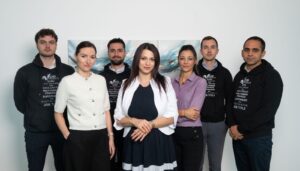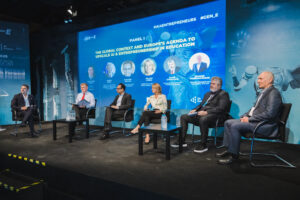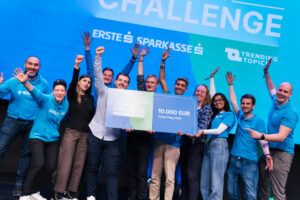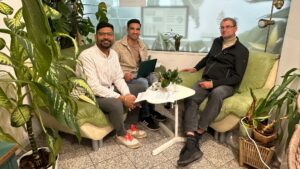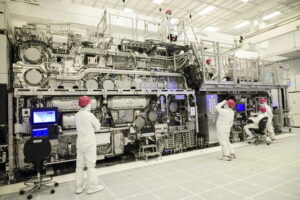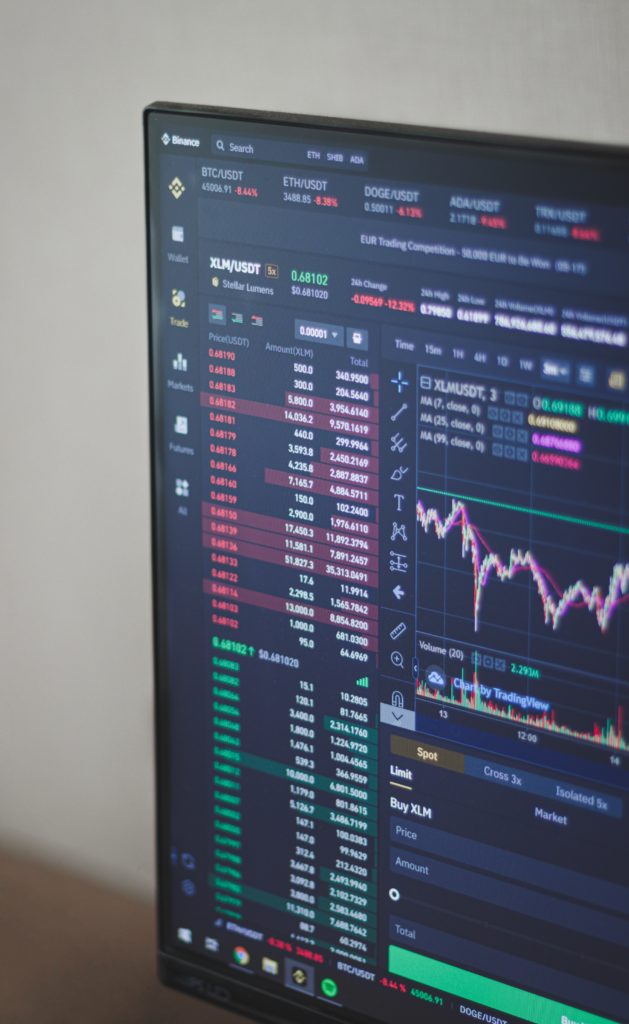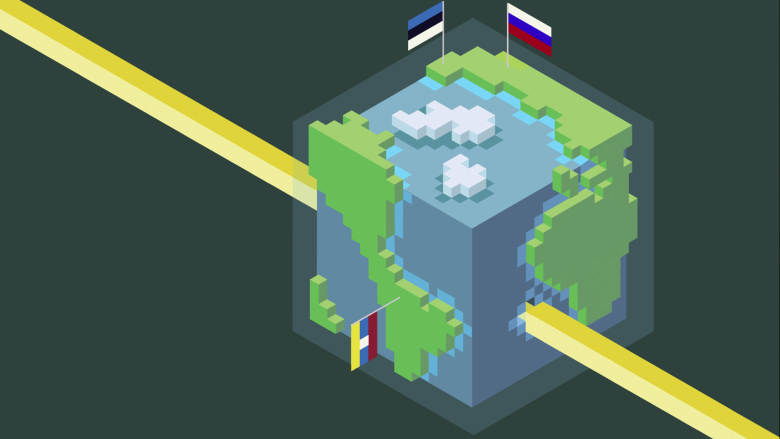CEE × DACH: Europe’s Most Important Tech Merger Is Happening Now
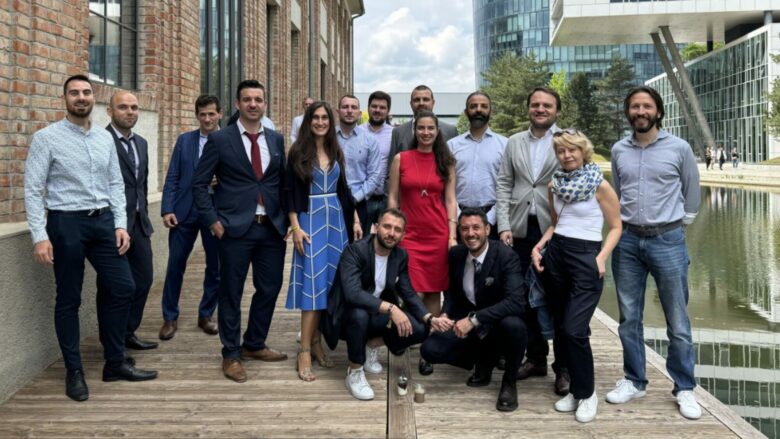
On May 12, hundreds of tech leaders from across Central and Eastern Europe — from Bucharest to Budapest, from Sofia to Riga — will mingle with investors and corporate leaders from across the DACH region at the CEE Innovation Forum in Vienna.
It’s a scene that might have been rare a decade ago, but today it feels almost inevitable. The once-distinct startup arenas of CEE and DACH countries are increasingly converging into a single innovation landscape. This merger of ecosystems – long foreshadowed by economic logic and talent flows – is now manifesting in real deals, expansions, and partnerships across Europe’s center.
And as geopolitical alliances gain momentum, this convergence is starting to reshape the continent’s tech future, with Vienna’s upcoming forum as a key catalyst.
“We see our role as building real, long-term bridges between the CEE and DACH innovation ecosystems,” says Teodor Antonio Georgiev, Co-Founder & Head at Storytelling Studio by The Recursive. “After catalyzing major connections at Bits&Pretzels last year — where our #BreakingGrounds delegation met with investors like Creandum — we’re continuing that momentum. The CEE Innovation Forum in Vienna and our largest-ever delegation to GITEX Europe in Berlin are designed to deepen those ties. It’s not just about visibility anymore — it’s about dealmaking, shared strategy, and shaping a more integrated European tech future.”
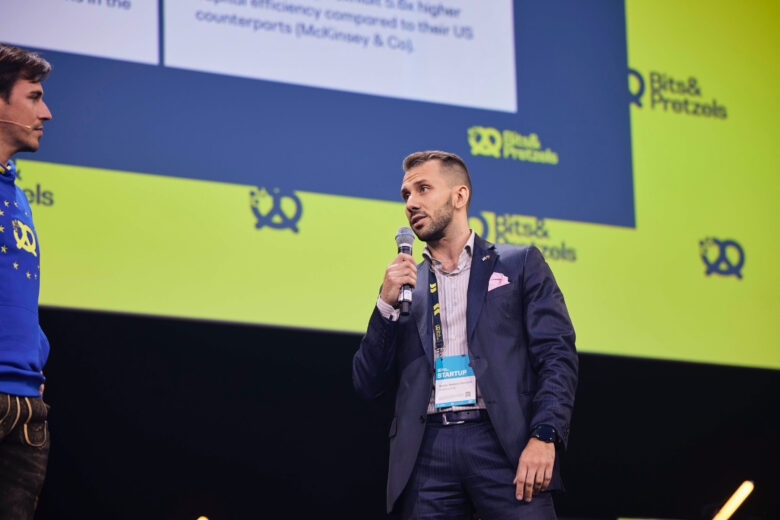
Investment Flows Bridge East and West
Venture capital is at the forefront of the CEE–DACH convergence. In recent years, DACH has emerged as a significant source of funding for CEE startups. Major funds from Vienna, Berlin, and Zurich are betting big on founders from Prague to Sofia. Austrian VCs like Speedinvest, UNIQA Ventures, Elevator Ventures and Calm/Storm have made dozens of investments across CEE in fintech, healthtech, deep tech and SaaS – with Speedinvest alone leading many early rounds Germany’s top funds are equally active: Earlybird, Point Nine Capital, Creandum, Freigeist and others have collectively backed scores of CEE ventures.
By one count, investors from Austria, Germany and Switzerland have financed 50+ startups from CEE, including prominent names like Bulgarian drone maker Dronamics, Czech fintech Twisto, Polish healthtech Docplanner, Romania’s UiPath and Bulgaria’s satellite startup EnduroSat. The portfolios of these DACH investors read like a who’s who of CEE success stories, highlighting how intertwined the regions have become.
“In the past, Vienna served as a hub for CEE business success – why shouldn’t it do the same for startups? At Venturecake, we believe Europe needs more professional and connected structures to empower the next generation of founders. Our co-owned accelerator is our contribution to that vision”, commented Clemens Böhmer, Co-CEO weXelerate, Founding Partner Venturecake.
This capital flow is driven by hard numbers. CEE’s startup ecosystem is no longer a small sibling to Western Europe – it’s one of the continent’s fastest-growing tech hubs. As of early 2025, the combined value of CEE startups reached €243 billion, up from €180 billion just five years prior.
In 2024 alone, companies in CEE raised €2.3 billion in venture funding, €200 million more than the previous year. In fact, over the past half-decade, CEE has outpaced even traditionally strong regions like Scandinavia and DACH itself in investment growth. With 23 new unicorns emerging from CEE in 2021–2022, global investors see the region as Europe’s next big opportunity.
Back in 2022, we even saw Austria’s 3VC launch a €150 million fund to support startups in both CEE and DACH – a deliberate bid to straddle the two arenas. Likewise, Romanian co-investment platform SeedBlink expanded into the DACH market to syndicate deals with local angels and VCs, doubling its planned investment volumes in 2024 to meet demand.
The message is clear: the walls between Eastern and Western European venture markets are coming down, replaced by a single corridor of capital.
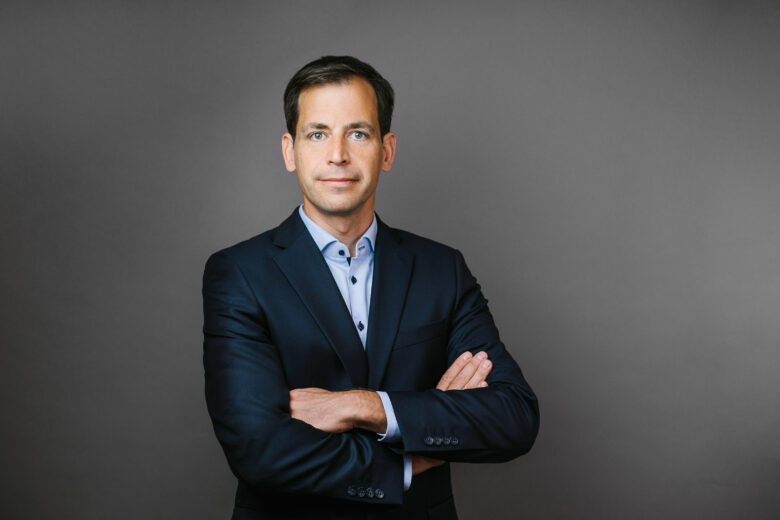
Startups Scale Beyond Borders
For startup founders in CEE, the DACH region has become the natural springboard for scaling up. With its substantial market size, high spending power, and geographic proximity, DACH is an “essential market for growth” for many CEE companies, a report by The Recursive states. Take Payhawk, a Bulgarian fintech unicorn, or Mews, a Czech-born hospitality tech unicorn – both have publicly identified Germany and Austria as key target markets.
In sector after sector, from enterprise software to fintech to climate, CEE startups view DACH not as foreign territory but as an extension of their home playing field. The sentiment is mutual: many German and Austrian accelerators actively court founders from Poland, Romania, or the Balkans, knowing that some of the most promising new ventures are emerging there.
History and economics explain why this “merger” of markets feels so natural. CEE and DACH aren’t strangers – they share decades of trade ties and intertwined supply chains, and many corporate players operate across both regions. The result is a historically interconnected tech scene that makes cross-expansion almost intuitive.
Geographic proximity helps too. That closeness has fostered a growing bilingual, binational talent pool and a cultural overlap in business practices. In short, DACH offers CEE startups a large, accessible sandbox next door – and CEE offers DACH an injection of high-growth innovation that might be harder to find in the saturated home market. It’s a symbiosis both sides are embracing.
Corporates and Talent Seek a Shared Ecosystem
It’s not just venture capitalists and founders driving the convergence. Big corporations in the DACH region are increasingly looking east for innovation and talent. A vivid example landed in 2021, when German logistics giant DHL partnered with Bulgaria’s drone startup Dronamics to develop same-day cargo drone deliveries.
The deal underscored how a DACH corporate can tap CEE deep-tech expertise to stay on the cutting edge. Similar partnerships are multiplying: automotive firms from Bavaria establishing R&D centers in Hungary and Romania; Austrian banks adopting fintech solutions from across CEE. These alliances make business sense – CEE startups often offer niche innovation and agile development, while DACH corporations bring resources and global channels. The outcome is a win-win blend of ingenuity and scale.
Underpinning this corporate outreach is a pressing talent dynamic. Germany alone has roughly 149,000 unfilled IT jobs as of 2024 – a record-high shortage of tech specialists.
Such a talent gap cannot be closed domestically in the near term, and DACH employers know it. CEE, meanwhile, produces a steady stream of skilled engineers and scientists, many of whom either relocate west or work remotely for Western companies. Rather than viewing this as a brain drain, forward-thinking firms are leveraging it through distributed teams and cross-border hiring.
The result is a more blended workforce across the regions, effectively creating a single labor market for tech. “The shortage of IT specialists in Germany is a systemic problem for the economy,” the president of Germany’s IT industry association Bitkom has warned – a problem that closer integration with CEE’s talent pool can help solve. Likewise, CEE’s top tech minds increasingly see career opportunities not just in Silicon Valley but in Europe’s wealthiest hubs, often via partnerships or acquisitions by DACH-based companies. This talent interchange is reinforcing the ecosystem merger on a human level, knitting together networks of entrepreneurs, engineers, and executives from Zurich to Zagreb.
Strategic considerations are also playing a role. The past few years of geopolitical upheaval – from supply chain crises to war on Europe’s eastern border – have highlighted the importance of a resilient, pan-European innovation base.
CEE’s strengths in areas like cybersecurity, defense tech, and AI are now recognized as assets for all of Europe. It’s telling that at the upcoming CEE Innovation Forum in Vienna, one highlight will be the launch of a new “Who Is Protecting Europe’s Future?” report on the state of defense and cybersecurity in CEE.
DACH investors and corporates are keenly interested in such sectors, as the lines between national security and tech innovation blur. By working more closely with CEE’s deep talent in cybersecurity, Western Europe gains security and strategic depth. In turn, CEE companies gain access to larger contracts and partnerships that might have been out of reach. The impetus to join forces – to build a Europe where Warsaw and Sofia innovate hand-in-hand with Munich and Vienna – has never been stronger or more mutually beneficial.
CEE Innovation Forum Marks a Turning Point
All these trends – capital flows, startup expansions, corporate alliances, and talent sharing – are converging not by coincidence but as part of a systemic evolution. What used to be an opportunistic trickle of cross-border activity has swelled into a steady stream, and now a coordinated flood. This spring’s CEE Innovation Forum in Vienna is emblematic of that new reality. Billed as a high-level meeting ground for CEE’s tech leaders and DACH’s venture firms and corporates, the forum is designed to accelerate the integration that’s already underway.
For the first time, a dedicated platform is facilitating structured matchmaking between the two regions’ key players – something observers have noted was glaringly missing in years past.
On May 12, more than 500 participants are expected at Vienna’s weXelerate hub, including startup CEOs, venture capital partners, corporate innovation scouts, and policymakers from across Europe. They will engage in exclusive, curated meetings and “speed-dating” sessions to spark partnerships between top DACH investors/corporates and promising CEE startups.
In parallel, panels and case studies will dissect what it takes to succeed in cross-regional expansion, drawing lessons from those who have already bridged the gap. And notably, DACH venture firms and corporate VC arms will be out in force, reflecting their serious commitment to scouting CEE opportunities.
Crucially, the tone of this gathering is not promotional cheerleading, but strategic and pragmatic. The goal is to make the “CEE × DACH” connection more seamless for the long haul. As one of ViennaUP 2025’s flagship events, the forum sits under the larger umbrella of a city-driven initiative to position Vienna as a bridge between East and West.
The Austrian capital, historically a gateway to CEE, is leveraging that role in the tech context – encouraging founders to expand to Vienna as a stepping stone and urging Western investors to look eastward for deals. In doing so, it underscores that the ecosystem merger isn’t a one-off conference buzzword but a sustained shift in how business will be done.
A New Pan-European Innovation Bloc
As CEE and DACH fuse into a more unified tech ecosystem, the implications are profound. We are essentially witnessing the rise of a new pan-European innovation bloc spanning from the Baltics and Balkans to the Alps. This combined CEE–DACH tech arena boasts formidable strengths: high growth rates and cost-efficient talent in the East, coupled with deep capital reservoirs and mature markets in the West.
Economically, it’s a marriage of complementary advantages that makes the whole region more competitive globally. Strategically, it means innovations can scale within Europe’s borders, leveraging a market of over 200 million people before leaping to the US or Asia. And culturally, it cultivates a mindset that European tech isn’t just London, Paris, or Berlin – it’s also Cluj, Bratislava, and Vienna, all part of the same story.
None of this has happened overnight. It’s the result of years of groundwork: early investors who took chances on “outsider” founders, corporates who opened R&D centers abroad, and founders who networked tirelessly across language and border barriers. Those efforts are now reaching critical mass.
What’s changing in 2025 is the level of intentionality and scale. The “ecosystem merger” is no longer incidental; it’s by design. Initiatives like the CEE Innovation Forum exemplify that intentional push to integrate. They provide structure to the myriad connections forming organically, making it easier for the separate players to connect. Over time, such interactions create a self-reinforcing loop: success stories breed more curiosity and reduce the perceived risk of cross-regional ventures, leading to even more flow of money and ideas.
For investors and corporate innovation executives, this convergence presents both opportunity and imperative. Those who understand the nuance – the economic upside, the strategic resilience, and the talent arbitrage at play – stand to gain first-mover advantages in a market that is effectively doubling in breadth. It means access to a broader innovation pipeline and the ability to hedge bets across diverse economies. The savviest players are already adapting to this reality, crafting strategies that treat CEE and DACH as one continuum.
As Europe’s biggest ecosystem merger gathers steam, the narrative is refreshingly positive: it’s about integration and growth, not consolidation by acquisition or zero-sum games. The CEE–DACH story is one of two vibrant communities realizing they are stronger together – a case of the sum being greater than its parts.
In the halls of the Vienna forum and beyond, the mood will undoubtedly reflect this sense of shared purpose. What was once a gap between “emerging” and “established” markets is closing fast. In its place is a joint engine of innovation with a full tank of talent and capital. And as this engine revs up, it could well propel Europe to a new level of tech competitiveness on the world stage. The message to entrepreneurs and investors on both sides is clear: the borders are open, the ecosystems are merging, and now is the time to build – together – the next generation of European success stories.



